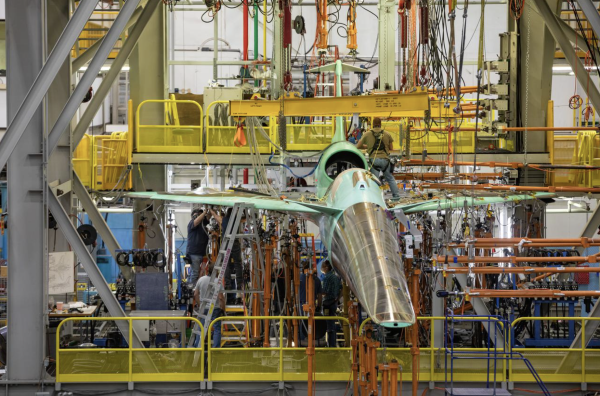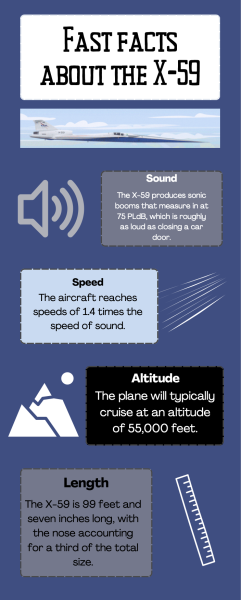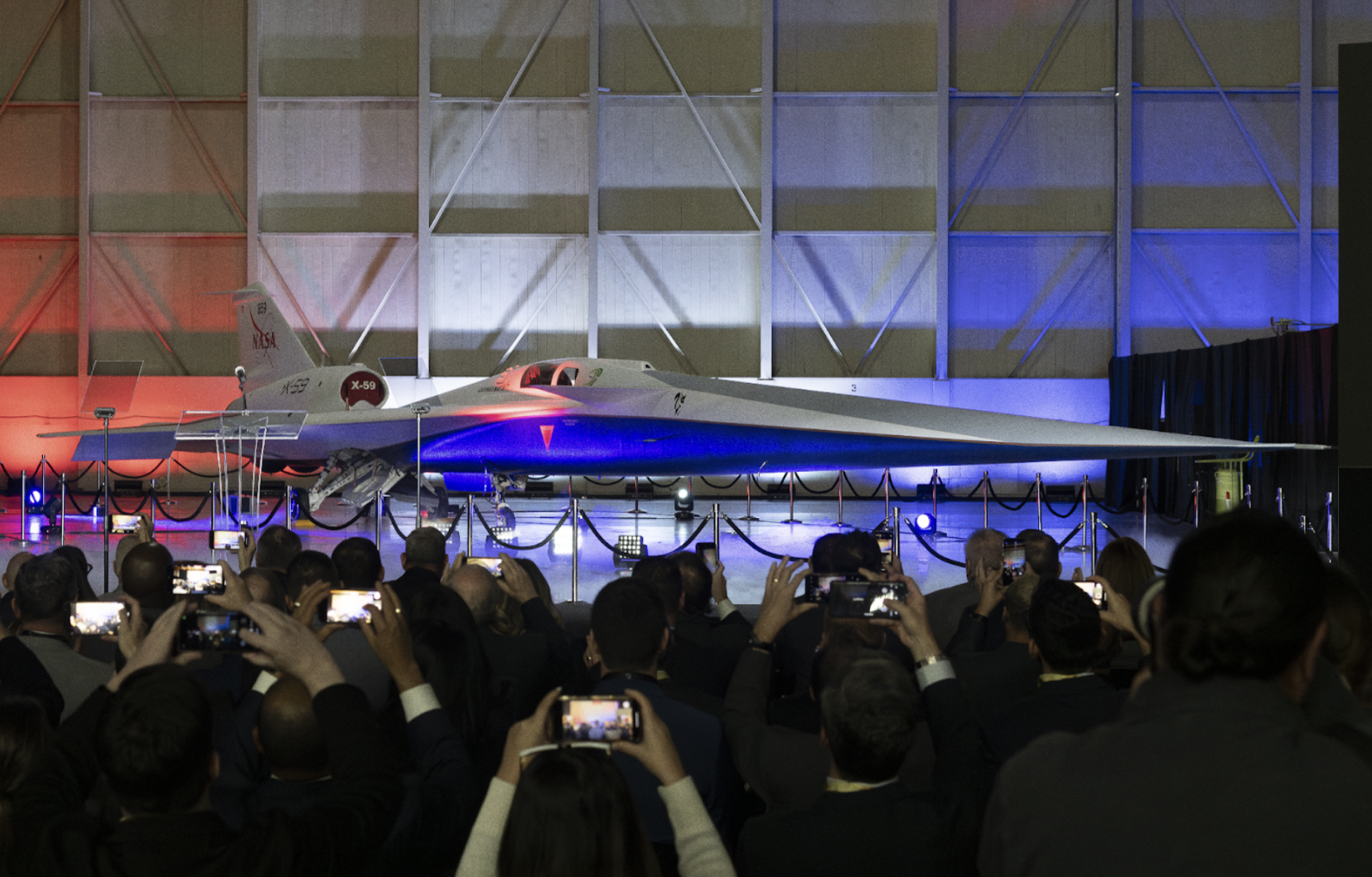After years of subsonic commercial flight, NASA and Lockheed Martin partnered together to produce the X-59, an experimental plane intended to provide insight into how supersonic planes can produce quieter sonic booms for scientists. The aircraft was revealed to the public on Jan. 12 as part of a ceremony at Lockheed Martin’s Skunk Works facility.

Many in the Green Hope community are anticipating the launch of this new technology, including Aditi Kushwaha, one of the co-presidents of the Astronomy Club at Green Hope, who explained how it may act as a spark for future innovations. “I think that the launch of this particular aircraft could serve as a gateway into a new area for commercial aviation, which could reshape aviation and potentially other aircrafts and spacecrafts as we know [them],” she said.
Unlike most previous supersonic planes, the X-59 was designed for quiet, yet fast, travel. Physics teacher Mr. Thomas Hunter Coffrin detailed the challenges of aerodynamics that the plan tackled. “Sonic booms are caused by the compression of sound waves as an object moves through the air. As an aircraft moves through the air, it produces and pushes soundwaves in all directions including directly ahead of the plane. As the aircraft travels faster than the speed of sound, the waves in the direction of travel compress which causes a dramatic instantaneous change in pressure. This pressure change is audible to us [as] a crash or pop,” he said.

In order to minimize the noise produced, the X-59 was designed with a longer nose, top-mounted engine and smooth underside. The plan makes a sound as loud as a car door closing because of these design choices, despite reaching speeds of up to 925 miles per hour. Traditional supersonic planes produced sonic booms similar to the sound of thunder, which led to the FAA (Federal Aviation Administration) banning overland supersonic commercial flights in 1973.
NASA plans to use the X-59 as part of its Quesst mission. In its first flight, the aircraft is meant to travel over certain communities, after which responses to the noise produced by the sonic booms would be recorded. With the data collected, NASA hopes that future legislation will be passed to allow the flight of quiet commercial supersonic aircraft.
If NASA’s Quesst mission is successful, companies that manufacture supersonic commercial planes, such as Boom Technologies, will be able to reestablish supersonic travel. Such advancements could lead to flights taking half as long as they currently do.
Supersonic travel could, however, may also create new problems. As Mr. Coffrin explained that prioritizing efficiency may be correlated with less accessibility. “This technology will make commercial air travel more efficient, but even less accessible than it already is. A seat on one of these aircraft will certainly cost some factor more than that on a 737 or an A320, further atomizing consumers into classes of people,” he said. Kushwasha agreed that new issues may arise, especially ones beyond commercial issues. “[There could be] a large array of problems with supersonic commercial travel in the future, most notably with the majority of concerns regarding noise pollution and potential harm to the environment. Modern-day aircrafts in today’s age emit lots of [greenhouse] gasses and noise, so it is reasonable to assume that futuristic aircrafts could emit the same (if not more) emissions,” she said.
As more quiet supersonic planes are produced, X-59 provides both promise for future innovation and raises potential issues.








